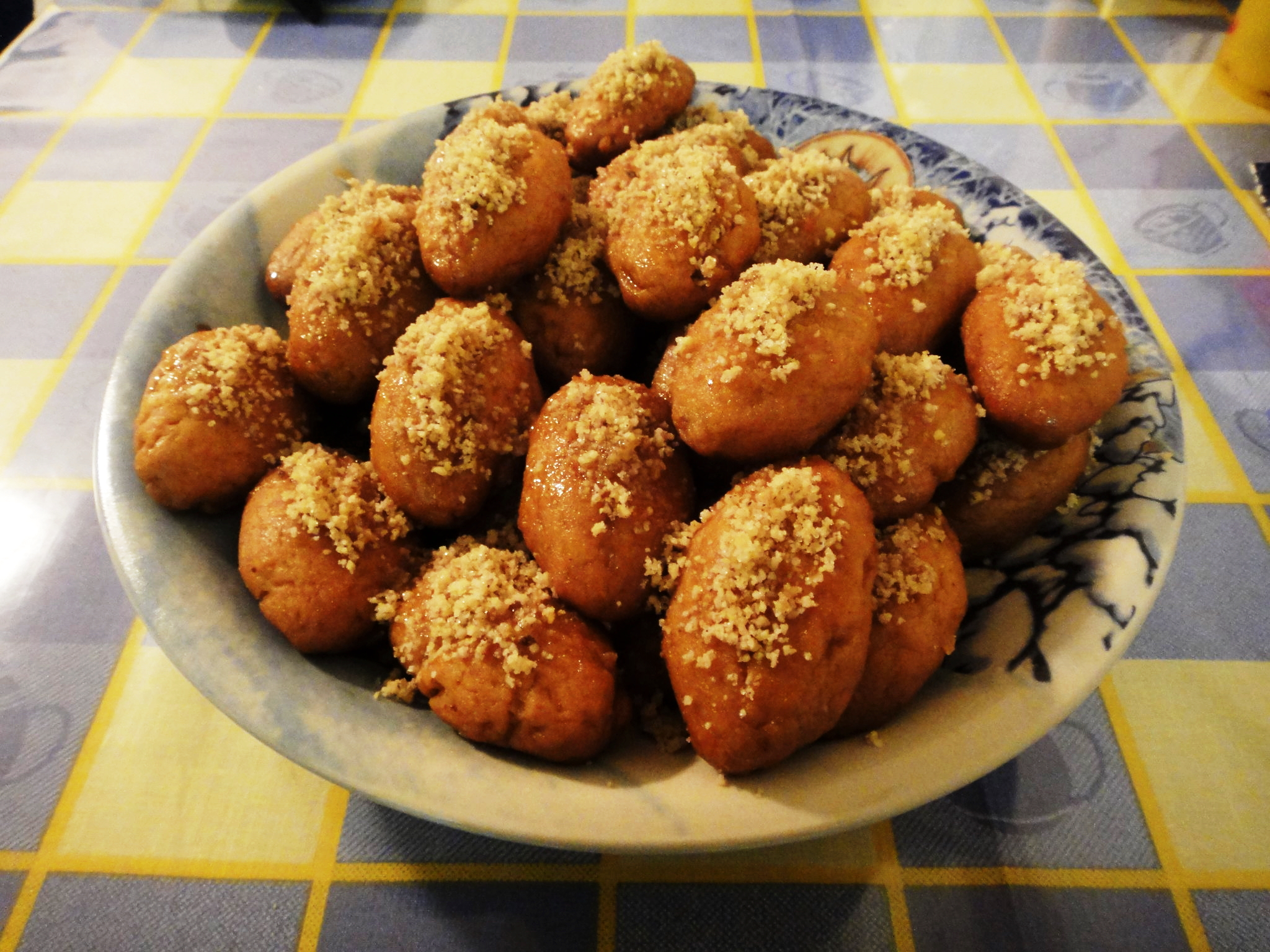The melomakarono (Greek: μελομακάρονο plural: melomakarona, μελομακάρονα) is an egg-shaped Greek dessert, like a cookie.
The word melomakarona is a combination of méli (μέλι) and makaria (μακάρια), meaning honey and blessed honouring of the dead. It’s a traditional Greek dessert prepared during the Christmas holiday season, however the roots of melomakarona are steeped in Greece’s pagan history.
Typical ingredients of melomakarona (μελομακάρονα) are flour or semolina, sugar (ζάχαρη), orange zest and/or fresh juice, cognac (or a something similar, we used ouzo), cinnamon (κανέλα) and olive oil (λάδι). During rolling they are often filled with ground walnuts. After baking they are shortly immersed in hot syrup (σιρόπι) made of honey and sugar dissolved in water. Finally, they are decorated with ground, as well as bigger, pieces of walnut (καρύδι).
Ingredients
1 cup olive λάδι (oil) or canola oil
1 cup ζάχαρη (sugar)
3/4 cup ouzo
1/2 cup fresh orange juice
Juice of 1 λεμόνι (lemon)
2 tablespoons orange zest
1 cup of fine semolina
2 and 1/2 cups of plain flour
1 teaspoon of baking powder
1 teaspoon κανέλα (cinnamon)
1 teaspoon clove powder
Method
1. Sift baking powder with αλεύρι (flour).
2. Beat sugar and oil, add all ingredients and mix to make a dough.
3. Shape by taking a small fist full of dough and making a short oval shape.
4. Do not make them too big, so they will also cook on the inside.
5. Bake on baking paper in a pre-heated oven at 180 degrees for about 30 minutes.
6. Remove them from the oven and put them on a cooling rack.
7. Make syrup.
Syrup
2 cups of water
2 cups sugar
1 cups honey
1 stick cinnamon
5 whole cloves
1 star anise
1- 2 teaspoons rosewater
Method
1. Put all the ingredients in a saucepan and bring to the boil for about 5 minutes on a slow heat.
2. Take off heat and take out spices.
3. Dip the melomakarona with a slotted spoon in the syrup while still hot for a few seconds, and line up on a platter in layers, sprinkling each layer with coarsely chopped walnuts.
Enjoy your melomakarona!
This blog was written by Greek teacher Stefania. Header image: Kalambaki2 via Wikimedia Commons (CC BY-SA 3.0).

